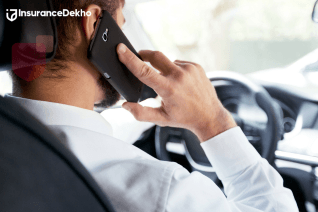Does Comprehensive Car Insurance Cover Hit and Runs?
Does Comprehensive Car Insurance Cover Hit and Runs?
Being involved in a car accident can be distressing, but when the responsible party flees the scene – a hit-and-run incident – it adds an extra layer of frustration. Comprehensive car insurance is there to protect you from various non-collision events, but does it cover hit-and-runs? Here, we will explore the concept of comprehensive car insurance, discuss its coverage inclusions and exclusions, and find out whether it provides protection against hit-and-run accidents.
Table of Contents
Understanding Comprehensive Car Insurance
Comprehensive car insurance is an important type of coverage that goes beyond basic liability insurance. While liability insurance covers damages to other parties in an accident, comprehensive insurance safeguards your vehicle against non-collision incidents. These incidents can include theft, vandalism, natural disasters, falling objects, and sometimes even animal collisions.

Coverage for Hit and Runs
The good news is that, in most cases, comprehensive car insurance does cover hit-and-run incidents. When your vehicle is damaged in a hit-and-run, your comprehensive coverage should come into play, offering financial protection for the repairs, subject to the deductible specified in your policy.
Having comprehensive coverage can provide you with much-needed relief and financial support in such stressful situations. It's essential to act promptly and follow the necessary steps after a hit-and-run incident. Contact the police to report the incident, and then inform your insurance provider about the accident and file a claim with the relevant details and documentation.
The Importance of Uninsured Motorist Coverage
- Explaining Uninsured Motorist Coverage
Uninsured motorist coverage is a vital component of auto insurance that provides protection when you're involved in an accident with a driver who either doesn't have insurance or lacks sufficient coverage to pay for the damages. In essence, this coverage acts as a safety net for responsible drivers who find themselves in unfortunate situations with uninsured or underinsured motorists.
- How Uninsured Motorist Coverage Complements Comprehensive Insurance
- While comprehensive car insurance offers coverage for various non-collision incidents like theft, vandalism, and natural disasters, it does not typically cover accidents involving other drivers. This is where uninsured motorist coverage becomes invaluable. It fills the gap left by comprehensive insurance by ensuring that you're financially protected when you're not at fault but the responsible driver is uninsured or underinsured.
- Comprehensive insurance primarily safeguards your vehicle against external threats, while uninsured motorist coverage focuses on safeguarding you as a driver and your passengers. Combining these two types of coverage creates a more robust and well-rounded insurance package, reducing potential financial burdens in different accident scenarios.
- Protection Against Hit and Runs Involving Uninsured Drivers
Among the many benefits of uninsured motorist coverage is its protection against hit-and-run incidents involving uninsured drivers. Unfortunately, hit-and-run accidents can leave victims uncertain, especially when the at-fault driver cannot be identified or is uninsured.
To Conclude
Comprehensive car insurance can indeed be a lifesaver when it comes to hit-and-run incidents. This type of coverage goes beyond the standard liability insurance, offering protection against a range of non-collision events, including hit-and-run accidents. While it's essential to understand the coverage inclusions and exclusions in your policy, having comprehensive coverage provides valuable peace of mind for car owners. Remember to report hit-and-run incidents to the authorities and your insurance company promptly, ensuring a smoother claims process and prompt resolution.
FAQs
- What is a hit-and-run accident?
A hit-and-run accident occurs when the driver involved in a collision with another property, vehicle, or pedestrian leaves the scene without providing identification or offering assistance. This type of incident is illegal and can lead to serious consequences for the fleeing driver.
- Does comprehensive car insurance cover hit-and-run incidents?
Yes, in most cases, comprehensive car insurance covers hit-and-run incidents. Comprehensive insurance protects your vehicle from non-collision events, including damages caused by hit-and-run accidents, subject to the policy's deductible.
- What should I do if I'm a victim of a hit-and-run accident?
If you're a victim of a hit-and-run accident, prioritise your safety first. Then, gather as much information about the incident as possible, including the time, location, and witness statements. Report the incident to the police immediately and inform your insurance provider to initiate the claims process.
- Will my insurance rates increase if I make a hit-and-run claim?
Filing a hit-and-run claim on your comprehensive insurance typically won't lead to a rate increase. Hit-and-run claims are often treated as "not-at-fault" incidents, and insurers generally do not penalise policyholders for making such claims.
- What happens if the responsible driver is caught after I've made a claim?
If the responsible driver is identified and caught after you've filed a hit-and-run claim, your insurance company may seek reimbursement from the driver's insurance, if they have any. This process is known as subrogation and may help recover your deductible.














































